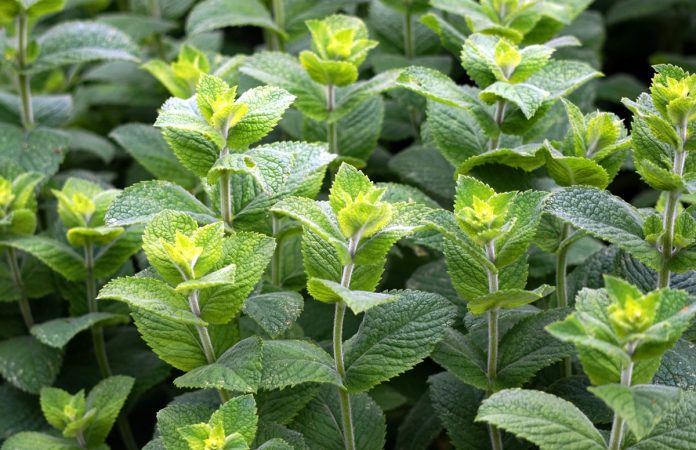The history of mint can be traced back to ancient times. The herb was highly valued by the ancient Egyptians, Greeks, and Romans, who used it for various purposes including medicinal, culinary, and ceremonial. Mint was also used as currency in some cultures.
Ideal Growing Conditions
Mint is a hardy plant that requires minimal care. It prefers a sunny or partially shaded location with well-drained soil. It can tolerate a wide range of soil types but prefers slightly acidic soil with a pH between 6.0 and 7.0. Additionally, mint enjoys moist soil but not waterlogged.
Watering and Fertilizing
When it comes to watering, mint requires consistent moisture to thrive. It is recommended to water the plant deeply once a week, allowing the soil to dry out slightly in between watering.
The frequency of watering will depend on the climate and the soil type. In hotter and drier climates, mint may need to be watered more frequently, while in cooler and wetter climates, less frequent watering may be necessary.
Fertilizing can be done every four to six weeks during the growing season with a balanced fertilizer.
Lighting
Mint prefers full sun to partial shade, but it can also tolerate some shade. If grown indoors, make sure to place the plant near a sunny window or under grow lights. Overexposure to direct sunlight can cause the leaves to become burnt.
Harvesting and Storage
Mint is ready for harvest once it reaches a height of about six inches. To harvest, simply cut the stem just above a pair of leaves. The leaves can either be used fresh or dried. To dry the mint, tie the stems together and hang them upside down in a warm, dry place for two weeks. Once fully dried, strip the leaves from the stems and store them in an airtight container away from light and moisture. You can also use a dehydrator.
Propagation
Mint can be propagated either by seed or by division. The seeds are tiny and resemble black specks. To propagate by seed, plant them in moist soil and keep them warm until they germinate. Division can be done in the spring by simply dividing the root ball into two or more sections and replanting them in new soil.
Usage
Mint is a versatile herb that can be used in a variety of ways. Its fresh leaves add flavor to salads, drinks, and desserts. Dried mint can be used to make tea, seasoning blends, and infused oils. Mint is also commonly used in aromatherapy and as a natural bug repellent.
- The garden’s rich nectar and pollen is a magnet for beneficial insects.
- Flies and ants are deterred by mint in the garden.
- Soothe an upset stomach with peppermint tea that also calms the digestive system.
- Ease abdominal cramps with a comforting cup of tea.
- To soothe sunburns, gently apply strong, chilled peppermint tea with clean cotton pads.
- Freshen up your home by adding a few drops of mint essential oil to unscented cleaners.
- Use mint as a natural remedy for cold relief.
Remedies for Keeping Bugs Off
While mint is known for its insect-repelling properties, sometimes bugs can still find their way to the plant. To keep pests at bay, try spraying the leaves with a mixture of water and peppermint oil. You can also inter-plant mint with other bug-repelling plants like basil or marigolds.
Growing mint is easy and rewarding, and with proper care, it can provide a bountiful harvest of fresh, aromatic leaves all season long. From planting to storage, this guide has covered everything you need to know about growing and using this versatile herb. So go ahead and start your own mint garden today!
The Author:
Pioneerthinking.com – Ingredients for a Simple Life.
Photo. Matthias Bockel

Carla Leach March 29, 2016 At 9:00 am
Mint is may be one of few herbs I don’t have in my garden and I haven’t tried to grow till now.There’s no particular reason about that, and I really like it in fact. Your post came as a good reminder for me and the info you’ve shared is quite useful. I may try growing mint this year. Thank you for this post! Greets!
You’re most welcome! I’m so glad that the post was helpful and it inspired you to try growing mint in your garden this year. Mint is a wonderful herb with many health benefits and culinary uses, and it’s really easy to grow too! If you have any questions or need any tips on growing mint, feel free to let me know. Happy gardening!